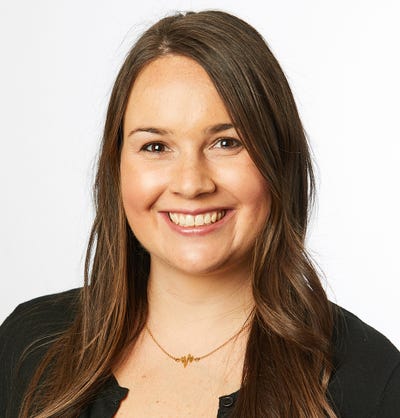How to implement a healthy-beverage programHow to implement a healthy-beverage program
Dartmouth- Hitchcock Medical Center. In January 2012, Dartmouth-Hitchcock Medical Center (DHMC), in Lebanon, N.H., discontinued the sale of sugar-sweetened beverages (SSB) in the dining room and café, vending machines, on-site retailers and every other venue on campus.
Challenge
Creating a healthy-beverage program without losing revenue.
Solution
In January 2012, Dartmouth-Hitchcock Medical Center (DHMC), in Lebanon, N.H., discontinued the sale of sugar-sweetened beverages (SSB) in the dining room and café, vending machines, on-site retailers and every other venue on campus. Though a major customer backlash might have seemed likely, the results showed a different picture: Bottled-water and milk sales skyrocketed, and employees and visitors say they are more satisfied with the healthier options.
How it's done
It all started back in 2011, when DHMC’s Healthy Living Committee began brainstorming ways to achieve the healthiest population possible, says Deborah P. Keane, director of food and nutrition services. “After reviewing the evidence-based recommendations put forth by one of the registered dietitians—[nearly all major studies have established a clear link between SSBs and obesity, not to mention heart disease, Type 2 diabetes and high blood pressure]—the answer was simple: [SSBs had to go].”
So what exactly is an SSB? “Drinks that contain added sugar from natural sources, such as white sugar, brown sugar, honey or nectar, or man-made sweeteners, such as high fructose corn syrup,” Keane explains. While employees and visitors are still allowed to bring their own drinks to campus, healthier beverages (those containing no added sugar, such as water, diet soda, 100% fruit juices, coffee, tea, hot chocolate and milk) are now the only drinks offered on the Lebanon campus, with no limit on serving size. It’s worth noting that patients on a therapeutic diet are still able to have regular Coke, ginger ale and sports drinks.
“Our goal was to implement this program in six months’ time. We would educate employees and visitors on how much sugar and empty calories were in sweetened beverages and [introduce them to] healthier beverages,” Keane says. To accomplish this goal, hospital leadership, the Healthy Living Committee, communications and marketing, and food and nutrition services worked closely together to develop a communications and implementation plan.
First up: The foodservice department had to work with vendors to change the product mix, ensuring they gave vendors ample time to source any new products not already in their inventory.
Next, the groups publicized this new initiative in written and online communications, in addition to creating a FAQ sheet to post at the points of sale and on the hospital’s intranet and even to distribute to outside vendors. The FAQ sheet outlined the new policy with effective dates, affected areas, health statistics, definitions of SSBs, available drinks and answers to common questions.
“It’s important to develop an education plan for the employees, patients, visitors, customers and distributors with educational materials available,” adds Keane, who also set up a booth to answer questions. The staff especially should be fully informed so they can answer customer questions and concerns.
Be sure to set a date to implement the program. “Carefully consider the timing of the announcement and the institution’s commitment to staying the course,” Keane adds.
Of course, there is the inevitable pushback from a program like this, though Keane says that with a response plan, the program can still be successful. “You’ll receive complaints that freedom of choice was taken away. Response: You can still bring soda from home. Customers will ask why we still sell diet soda, knowing that sugar substitutes aren’t good for you. Response: The research is still inconclusive. Be prepared with answers to those questions ahead of time.
“Despite some complaints, many customers, visitors and especially medical staff were supportive of our new beverage program,” assures Keane, adding that bottled-water and milk sales have significantly increased since SSBs were eliminated, though overall beverage sales have decreased. “Typically, beverage sales decrease [with a program like this], but gradually some of those losses will be recovered,” she explains. “We accepted the fact that we would not be able to make up for all losses in revenue sales; rather, our gains would be having a healthier workforce. That was most important to us.”
About the Authors
You May Also Like







.jpg?width=300&auto=webp&quality=80&disable=upscale)
